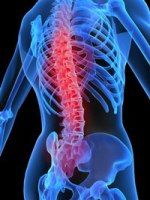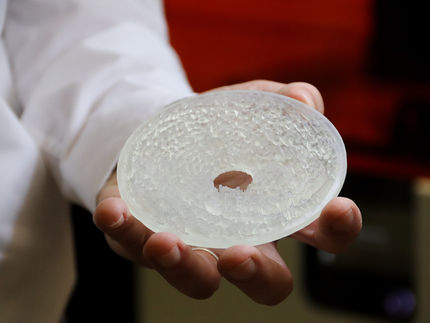New class of brain-protecting drugs emerging
Advertisement
Researchers have identified a compound that mimics one of the brain's own growth factors and can protect brain cells against damage in several animal models of neurological disease. 7,8-dihydroxyflavone is a member of the flavonoid family of chemicals, which are abundant in fruits and vegetables. The compound's selective effects suggest that it could be the founder of a new class of brain-protecting drugs. The results were published in the Proceedings of the National Academy of Sciences.
Investigators at Emory University School of Medicine, led by Keqiang Ye, PhD, associate professor of pathology and laboratory medicine, were searching for a way to mimic a protein found in the brain called BDNF (brain-derived neurotrophic factor).
"BDNF has been studied extensively for its ability to protect neurons vulnerable to degeneration in several diseases, such as ALS, Parkinson's and Alzheimer's disease," Ye says. "The trouble with BDNF is one of delivery. It's a protein, so it can't cross the blood-brain barrier and degrades quickly."
Working with Ye, postdoctoral fellow Sung-Wuk Jang sifted through a library of chemicals to find those that could stimulate one of the proteins on the surfaces of neurons that BDNF binds to. They could show that 7,8-dihydroxyflavone sends survival signals to brain cells by pulling together two TrkB receiver-dish molecules, just like BDNF does. Moreover, it is active in the brain when injected into the body cavity, meaning that it can cross the blood-brain barrier. Ye says many experimental "neuroprotectant" drugs have been unsuccessful in clinical trials for diseases such as stroke and Parkinson's over the last decade.
"What's different is this is a new pathway, offering us new opportunities," he says. "This is the first molecule we've found that specifically triggers TrkB."
7,8-dihydroxyflavone could partially prevent the death of neurons in experimental models of three neurological diseases:
Seizure: Mice treated with the stimulant kainic acid
Stroke: Loss of blood flow induced in mice by blocking a cerebral artery
Parkinson's disease: Mice treated with a toxin that kills the same neurons affected by Parkinson's
To show that the effects of 7,8-dihydroxyflavone depended on TrkB, the authors used mice with a modified TrkB gene, which makes their neurons vulnerable to a chemical that is not otherwise toxic. That chemical could inhibit the effects of 7,8-dihydroxyflavone.
7,8-dihydroxyflavone is a member of a family of antioxidant compounds naturally found in foods ranging from cherries to soybeans. Tests in animals indicate that the compound has low chronic toxicity, Ye says. In clinical trials, BDNF itself can have side effects such as sensory alterations, weight loss or nausea.
Original publication: S.W. Jang, X. Liu, M. Yepes, K.R. Shepherd, G.W. Miller, Y. Liu, W.D. Wilson, G. Xiao, B. Blanchi, Y.E. Sun, and K. Ye; "A selective TrkB agonist with potent neurotrophic activities by 7,8-dihydroxyflavone."; PNAS2010.


























































